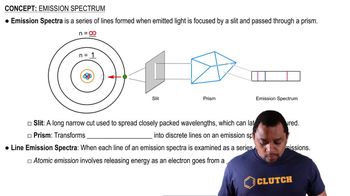Here are the essential concepts you must grasp in order to answer the question correctly.
Half-life
Half-life is the time required for half of the radioactive nuclei in a sample to decay. For uranium-235, which has a half-life of 7.1 × 10^8 years, this means that after this period, only half of the original amount of uranium-235 will remain, while the other half has transformed into other elements through radioactive decay.
Recommended video:
Radioactive Decay
Radioactive decay is the process by which unstable atomic nuclei lose energy by emitting radiation, such as alpha particles. In the case of uranium-235, it decays by emitting alpha particles, which consist of two protons and two neutrons, effectively reducing the atomic number and mass of the original nucleus.
Recommended video:
Rate of Radioactive Decay
Activity and Emission Rate
The activity of a radioactive sample is defined as the number of decays per unit time, typically measured in becquerels (Bq). To calculate the number of alpha particles emitted by a sample, one can use the activity formula, which incorporates the number of radioactive atoms present and the decay constant derived from the half-life, allowing for the determination of emissions over a specified time frame.
Recommended video:
 Verified step by step guidance
Verified step by step guidance

